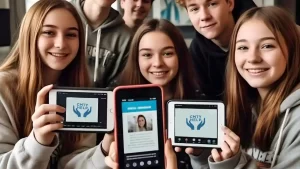Youth isolation has become an increasing concern in modern society, especially with the rise of digital interactions that often replace face-to-face connections. However, one powerful way to combat this isolation is through community service—an avenue where young people can actively engage with others and contribute meaningfully to their neighborhoods. By tracking service hours, the benefits of community service are amplified, offering not only a sense of accomplishment but also motivation to continue making a positive impact.
The Transformative Power of Community Service in Youth Isolation
Community service provides young people with valuable opportunities to interact with peers, mentors, and members of their communities. Whether it’s volunteering at a food bank, tutoring younger students, or participating in local clean-up efforts, these activities foster a sense of purpose and belonging.
Youth are no longer isolated individuals but part of something greater—working toward shared goals with others who value their contributions.
This engagement not only combats feelings of loneliness but also enhances self-esteem. As young people witness the tangible impact of their actions, they develop a deeper sense of pride and accomplishment. The relationships formed through shared experiences become lasting connections, further breaking down the barriers of isolation.
Tracking Service Hours: Motivation and Accountability
Incorporating the practice of tracking service hours brings a structured approach to community engagement, motivating youth to stay involved and committed. By setting service hour goals or requirements, organizations, schools, and colleges provide an added layer of accountability that keeps youth engaged.
This structure transforms community service from a one-time activity into a consistent habit, reinforcing positive behavior over time.
Additionally, tracking service hours offers a concrete way for young individuals to see the value of their contributions. Reflecting on the hours they’ve invested in helping others allows them to measure their impact and understand their role in society.
This sense of progress and achievement is a powerful motivator, helping youth stay focused and inspired to continue contributing.
Building Connections and Purpose
The dual approach of engaging in community service and tracking service hours does more than just fulfill a requirement—it helps young people build connections, find purpose, and gain confidence in their abilities.
As they contribute their time and effort to causes they care about, they experience firsthand the positive effects of community involvement. This not only reduces isolation but helps foster a deep sense of community and belonging.
Conclusion
Community service is an essential tool for reducing youth isolation, building strong relationships, and providing a sense of purpose. When coupled with tracking service hours, it becomes even more impactful—keeping youth motivated, accountable, and engaged in meaningful ways.
By fostering consistent involvement in their communities, we equip young people with the tools to overcome isolation, create lasting bonds, and make a real difference in the world around them. Community service is more than just giving back; it’s about nurturing emotional well-being and strengthening the ties that bind us all together.





I am proud to see how this platform is helping to bridge the gap of youth isolation. By providing an easy and effective way for young people to engage in community service, we are not only fostering connections but also empowering the next generation to make a meaningful difference in their communities.